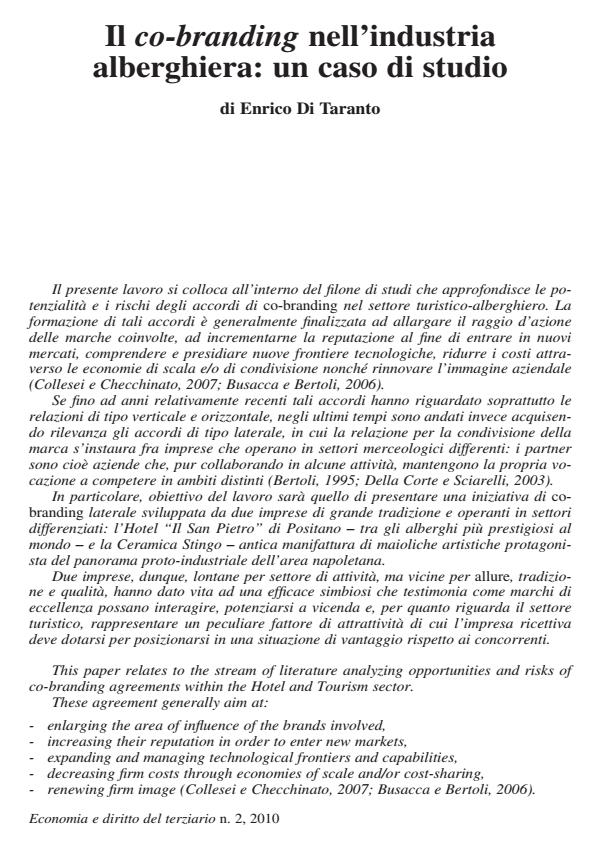Il co-branding nell’industria alberghiera: un caso di studio
Journal title ECONOMIA E DIRITTO DEL TERZIARIO
Author/s Enrico Di Taranto
Publishing Year 2010 Issue 2010/2
Language Italian Pages 17 P. 247-263 File size 597 KB
DOI 10.3280/ED2010-002003
DOI is like a bar code for intellectual property: to have more infomation
click here
Below, you can see the article first page
If you want to buy this article in PDF format, you can do it, following the instructions to buy download credits

FrancoAngeli is member of Publishers International Linking Association, Inc (PILA), a not-for-profit association which run the CrossRef service enabling links to and from online scholarly content.
This paper relates to the stream of literature analyzing opportunities and risks of co-branding agreements within the Hotel and Tourism sector. These agreement generally aim at: - enlarging the area of influence of the brands involved, - increasing their reputation in order to enter new markets, - expanding and managing technological frontiers and capabilities, - decreasing firm costs through economies of scale and/or cost-sharing, - renewing firm image (Collesei e Checchinato, 2007; Busacca e Bertoli, 2006). While until a few years ago these agreements mainly concerned vertical or horizontal relationships, in more recent years they have become lateral agreements: the cobranding takes place among firms operating in different sectors; though co-operating on a single project, the partners seek to maintain their competitive advantage in their own market (Bertoli, 1995; Della Corte e Sciarelli, 2003). In this context, this paper focuses on a lateral co-branding initiative developed by two firms with a long-standing reputation, operating in different economic sectors: the San Pietro Hotel in Positano, one of the most prestigious hotel in the world, and the Ceramica Stingo, an old manufacturing atelier of artistic tiles, and a key player in the proto-industrial landscape of the Neapolitan area. This paper shows how dynamic firms operating in different markets but similar for their allure, reputation and quality endow themselves with further competitive advantages; and how brands of excellence interact, increase their power, and act as an attractive factor for the Tourist sector.
Enrico Di Taranto, Il <i>co-branding</i> nell’industria alberghiera: un caso di studio in "ECONOMIA E DIRITTO DEL TERZIARIO " 2/2010, pp 247-263, DOI: 10.3280/ED2010-002003